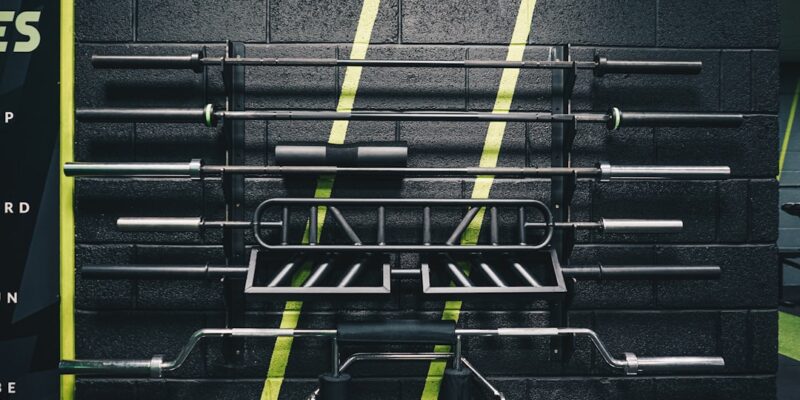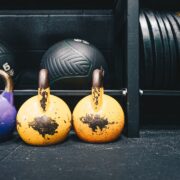
Foam Rolling: Techniques for Efficient Muscle Recovery
Foam rolling has become increasingly popular in recent years as a tool for muscle recovery and overall wellness. This simple yet effective practice involves using a foam roller to apply pressure to different areas of the body, helping to release tension, improve flexibility, and reduce muscle soreness. Whether you’re an athlete looking to enhance your performance or someone who simply wants to alleviate muscle tightness and discomfort, foam rolling can be a valuable addition to your routine.
Key Takeaways
- Foam rolling is a self-myofascial release technique that uses a foam roller to apply pressure to muscles and connective tissue.
- Foam rolling can help improve muscle recovery by increasing blood flow, reducing muscle soreness, and improving range of motion.
- Different foam rolling techniques include static, dynamic, and trigger point rolling, each with their own benefits and uses.
- Foam rolling and stretching both have benefits for muscle recovery, but foam rolling may be more effective for targeting specific areas of tightness or soreness.
- When choosing a foam roller, consider the density, size, and texture based on your needs and preferences. Avoid common mistakes like rolling too quickly or using improper form.
What is Foam Rolling and How Does it Work?
Foam rolling is a form of self-myofascial release, which is a technique used to release tension in the muscles and fascia (connective tissue). It involves using a cylindrical foam roller to apply pressure to specific areas of the body, targeting tight or sore muscles. By applying pressure to these areas, foam rolling helps to break up adhesions and knots in the muscles, promoting better blood flow and circulation.
When you use a foam roller, the pressure applied helps to stimulate the Golgi tendon organs, which are sensory receptors located in the tendons. This stimulation triggers a relaxation response in the muscles, allowing them to release tension and relax. Additionally, foam rolling can help improve the elasticity of the muscles and fascia, leading to increased range of motion and flexibility.
Benefits of Foam Rolling for Muscle Recovery
Foam rolling offers numerous benefits for muscle recovery and overall wellness. Here are some of the key advantages:
1. Reduction of muscle soreness and stiffness: Foam rolling can help alleviate muscle soreness and stiffness by breaking up adhesions and knots in the muscles. This can be particularly beneficial after an intense workout or physical activity, as it helps to speed up the recovery process.
2. Improved blood flow and circulation: When you use a foam roller, the pressure applied helps to increase blood flow and circulation to the muscles. This increased blood flow delivers more oxygen and nutrients to the muscles, helping them recover faster and reducing the risk of injury.
3. Increased range of motion and flexibility: Foam rolling can help improve your range of motion and flexibility by releasing tension in the muscles and fascia. This can be especially beneficial for athletes who need to maintain optimal flexibility for their sport or activity.
Understanding Different Foam Rolling Techniques
| Technique | Description | Benefits | Drawbacks |
|---|---|---|---|
| Static Foam Rolling | Rolling back and forth on a foam roller while pausing on tender spots. | Relieves muscle tension, improves flexibility, and increases blood flow. | May not be effective for deep tissue massage and can be uncomfortable for beginners. |
| Dynamic Foam Rolling | Moving the body in different positions while rolling on a foam roller. | Improves mobility, enhances athletic performance, and reduces risk of injury. | Requires more coordination and may not be suitable for those with limited mobility. |
| Trigger Point Foam Rolling | Targeting specific trigger points or knots in the muscles with a foam roller. | Relieves muscle pain and tension, improves range of motion, and enhances recovery. | Can be painful and may require professional guidance for beginners. |
There are various foam rolling techniques that can be used to target different areas of the body and address specific issues. Here are a few common techniques:
1. Myofascial release: This technique involves applying sustained pressure to a specific area of the body using a foam roller. The pressure is held for a certain period of time, typically around 30 seconds to 2 minutes, allowing the muscles and fascia to release tension and relax.
2. Trigger point therapy: Trigger points are tight knots or bands of muscle that can cause pain and discomfort. Trigger point therapy involves using a foam roller to apply pressure directly to these trigger points, helping to release tension and alleviate pain.
3. Rolling technique: This is the most common foam rolling technique, which involves rolling back and forth on the foam roller along the length of a muscle or muscle group. This technique helps to break up adhesions and knots in the muscles, promoting better blood flow and circulation.
Foam Rolling vs. Stretching: Which is Better for Muscle Recovery?
Both foam rolling and stretching can be beneficial for muscle recovery, but they serve different purposes and can be used together for optimal results.
Foam rolling primarily focuses on releasing tension in the muscles and fascia, promoting better blood flow and circulation, and improving range of motion and flexibility. It helps to break up adhesions and knots in the muscles, reducing muscle soreness and stiffness.
Stretching, on the other hand, primarily focuses on lengthening the muscles and improving flexibility. It helps to improve joint mobility, prevent muscle imbalances, and reduce the risk of injury.
While foam rolling and stretching can be used independently, they complement each other well and can be used together for a more comprehensive muscle recovery routine. Foam rolling can be done before stretching to help release tension in the muscles and prepare them for stretching. Stretching can then be done to further improve flexibility and maintain optimal range of motion.
How to Choose the Right Foam Roller for Your Needs
When choosing a foam roller, there are several factors to consider to ensure you select the right one for your needs. Here are some key factors to keep in mind:
1. Density: Foam rollers come in different densities, ranging from soft to firm. Softer foam rollers are more gentle and suitable for beginners or those with sensitive muscles. Firmer foam rollers provide deeper pressure and are better suited for experienced users or those with tight muscles.
2. Size: Foam rollers come in various sizes, including small, medium, and large. The size you choose will depend on your personal preference and the areas of the body you plan to target. Smaller foam rollers are more portable and better suited for targeting specific muscle groups, while larger foam rollers provide more stability and support.
3. Texture: Foam rollers can have different textures, such as smooth or textured surfaces. Textured foam rollers provide a deeper massage effect and can be more effective at releasing tension in the muscles.
For beginners, it’s generally recommended to start with a softer foam roller and gradually work your way up to firmer ones as your muscles become more accustomed to the pressure.
Common Mistakes to Avoid When Foam Rolling
While foam rolling is a relatively simple practice, there are some common mistakes that people often make. Here are a few mistakes to avoid:
1. Rolling too fast: One common mistake is rolling too quickly over the foam roller. It’s important to move slowly and deliberately, allowing the pressure to sink into the muscles and fascia. Rolling too fast can be less effective and may even cause injury.
2. Rolling over joints: Another mistake is rolling directly over joints, such as the knees or elbows. This can put unnecessary pressure on the joints and increase the risk of injury. It’s important to avoid rolling directly over joints and instead focus on the surrounding muscles.
3. Applying too much pressure: While it’s important to apply enough pressure to feel a deep massage effect, it’s also important to avoid applying too much pressure. Applying excessive pressure can be painful and may cause bruising or injury. It’s important to listen to your body and adjust the pressure accordingly.
To avoid these mistakes, it’s helpful to start with a softer foam roller and gradually increase the pressure as your muscles become more accustomed to the practice. It’s also important to pay attention to your body and adjust the technique as needed.
Incorporating Foam Rolling into Your Workout Routine
Foam rolling can be incorporated into your workout routine in various ways, depending on your goals and preferences. Here are some suggestions:
1. Pre-workout: Foam rolling before a workout can help prepare your muscles for exercise by releasing tension and increasing blood flow. It can be particularly beneficial for targeting specific areas of tightness or discomfort.
2. Post-workout: Foam rolling after a workout can help speed up the recovery process by reducing muscle soreness and stiffness. It can also help flush out metabolic waste products from the muscles, promoting faster recovery.
3. Active recovery days: On days when you’re not doing intense workouts, you can use foam rolling as a form of active recovery. This can help promote blood flow and circulation, alleviate muscle tightness, and enhance overall wellness.
It’s important to listen to your body and adjust your foam rolling routine based on how you’re feeling. Some people may benefit from foam rolling daily, while others may find that a few times a week is sufficient. Experiment with different frequencies and see what works best for you.
Foam Rolling for Specific Muscle Groups: Tips and Tricks
Foam rolling can be used to target specific muscle groups and address specific issues. Here are some tips and tricks for foam rolling different muscle groups:
1. Back: To foam roll the back, start by sitting on the foam roller with your knees bent and feet flat on the floor. Slowly roll back and forth along the length of your back, focusing on any areas of tightness or discomfort. You can also target the sides of your back by rolling onto one side and applying pressure to the muscles along the side of your spine.
2. Legs: To foam roll the legs, start by sitting on the foam roller with one leg extended in front of you. Place your hands behind you for support and slowly roll back and forth along the length of your leg, focusing on any areas of tightness or discomfort. You can also target specific areas, such as the calves or quadriceps, by bending your leg and placing the foam roller under that area.
3. Arms: To foam roll the arms, start by lying on your side with your arm extended in front of you. Place the foam roller under your arm and slowly roll back and forth along the length of your arm, focusing on any areas of tightness or discomfort. You can also target specific areas, such as the triceps or forearms, by bending your arm and placing the foam roller under that area.
When foam rolling different muscle groups, it’s important to move slowly and deliberately, allowing the pressure to sink into the muscles. If you find a particularly tight or tender spot, you can pause and hold the pressure for a few seconds to help release tension.
Foam Rolling for Injury Prevention and Rehabilitation
Foam rolling can be a valuable tool for injury prevention and rehabilitation. Here’s how it can help:
1. Injury prevention: Foam rolling can help prevent injuries by releasing tension in the muscles and fascia, improving flexibility, and promoting better blood flow and circulation. By incorporating foam rolling into your routine, you can help reduce the risk of muscle imbalances, overuse injuries, and other common injuries.
2. Rehabilitation: If you’re recovering from an injury, foam rolling can be a useful tool for rehabilitation. It can help break up scar tissue, improve range of motion, and promote faster healing. However, it’s important to consult with a healthcare professional before incorporating foam rolling into your rehabilitation routine to ensure it’s appropriate for your specific injury.
Foam rolling can be particularly beneficial for common injuries such as IT band syndrome, plantar fasciitis, and shin splints. By targeting these areas with foam rolling techniques, you can help alleviate pain and discomfort and promote faster recovery.
Foam Rolling for Improved Athletic Performance: What the Research Says
Numerous studies have been conducted on the effects of foam rolling on athletic performance. Here’s what the research says:
1. Increased range of motion: Several studies have found that foam rolling can significantly increase range of motion in various joints, including the hips, knees, and ankles. This increased range of motion can be beneficial for athletes who need to maintain optimal flexibility for their sport or activity.
2. Improved muscle performance: Foam rolling has been shown to improve muscle performance by increasing muscle activation and reducing muscle fatigue. This can lead to enhanced athletic performance and improved overall strength and power.
3. Faster recovery: Foam rolling has been found to significantly reduce muscle soreness and improve recovery time after intense exercise or physical activity. This can be particularly beneficial for athletes who need to recover quickly between training sessions or competitions.
While more research is needed to fully understand the mechanisms behind these benefits, the existing evidence suggests that foam rolling can be a valuable tool for athletes looking to enhance their performance.
Foam rolling is a simple yet effective practice that can offer numerous benefits for muscle recovery and overall wellness. By using a foam roller to apply pressure to different areas of the body, you can release tension, improve flexibility, and reduce muscle soreness. Whether you’re an athlete looking to enhance your performance or someone who simply wants to alleviate muscle tightness and discomfort, foam rolling can be a valuable addition to your routine.
To get started with foam rolling, choose a foam roller that suits your needs and preferences. Start with a softer foam roller if you’re a beginner and gradually work your way up to firmer ones as your muscles become more accustomed to the pressure. Avoid common mistakes such as rolling too fast or applying too much pressure, and listen to your body to ensure you’re using proper technique.
Incorporate foam rolling into your workout routine by using it before or after a workout, or on active recovery days. Experiment with different frequencies and see what works best for you. Target specific muscle groups by using different foam rolling techniques, and pay attention to any areas of tightness or discomfort.
Foam rolling can also be beneficial for injury prevention and rehabilitation, as well as improving athletic performance. Research has shown that foam rolling can increase range of motion, improve muscle performance, and speed up recovery time.
In conclusion, foam rolling is a versatile and effective practice that can benefit people of all fitness levels. Give it a try and experience the many benefits it has to offer for muscle recovery and overall wellness.
FAQs
What is foam rolling?
Foam rolling is a self-myofascial release technique that involves using a foam roller to apply pressure to specific areas of the body to release tension and improve mobility.
What are the benefits of foam rolling?
Foam rolling can help improve flexibility, reduce muscle soreness and stiffness, increase blood flow, and improve overall performance.
What muscles can be targeted with foam rolling?
Foam rolling can be used on a variety of muscles, including the calves, quads, hamstrings, glutes, back, and shoulders.
How often should I foam roll?
Foam rolling can be done daily or as needed, depending on your level of activity and muscle soreness.
What are some common foam rolling techniques?
Common foam rolling techniques include rolling back and forth over a specific muscle group, holding pressure on a specific point, and using a foam roller in combination with stretching.
Is foam rolling safe?
Foam rolling is generally safe for most people, but it is important to use proper technique and avoid rolling over bony areas or areas of acute injury. If you have any concerns, it is best to consult with a healthcare professional before starting a foam rolling routine.













